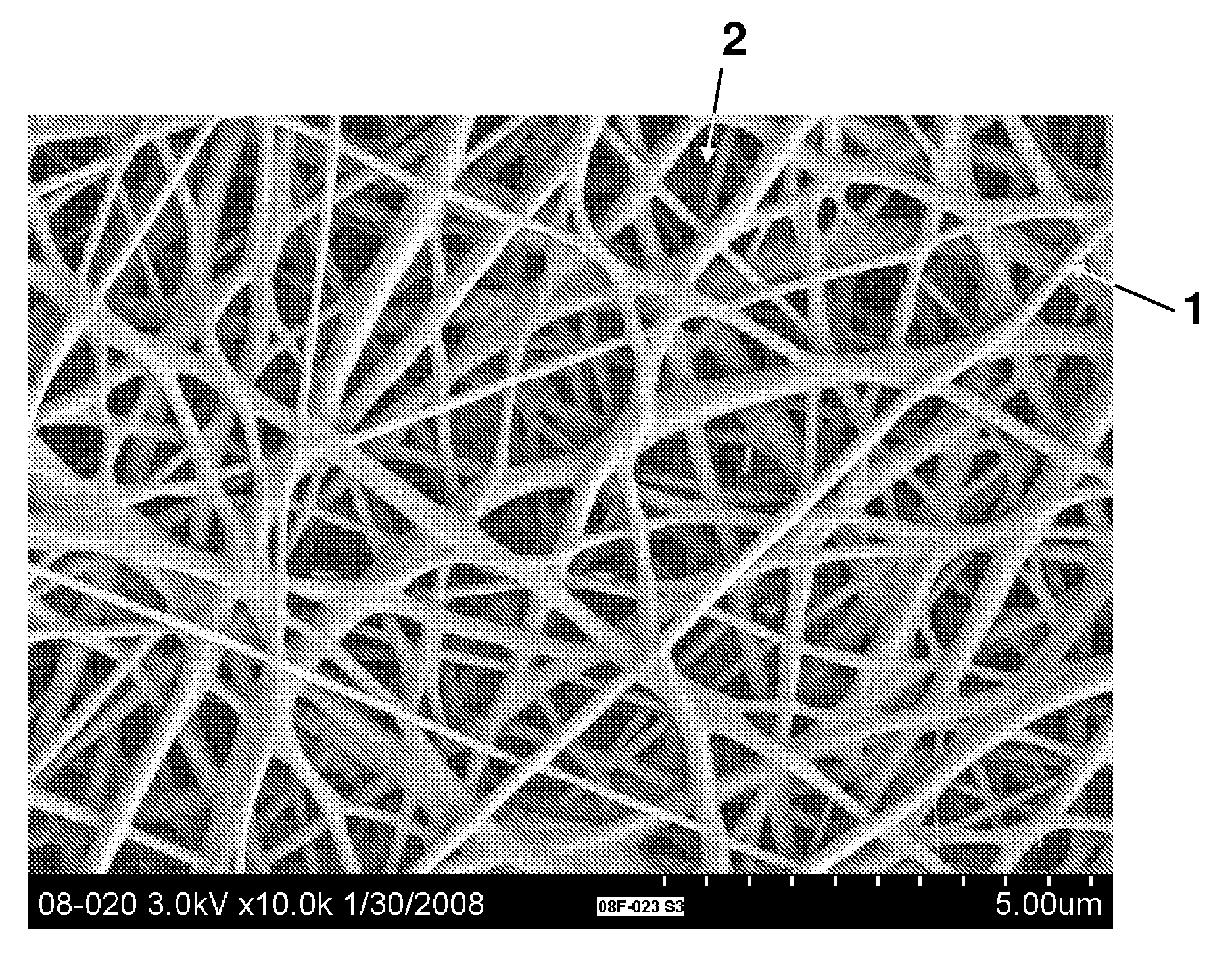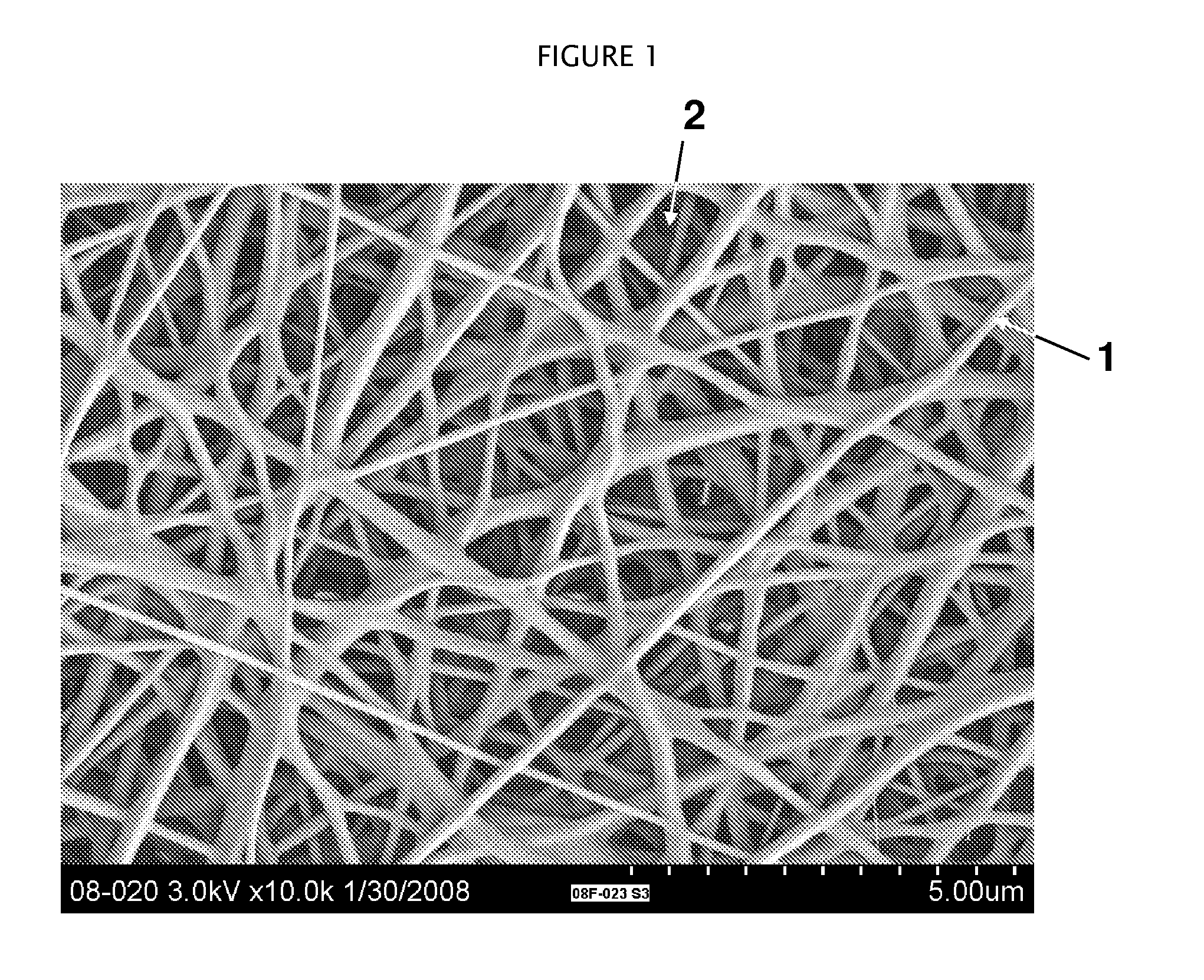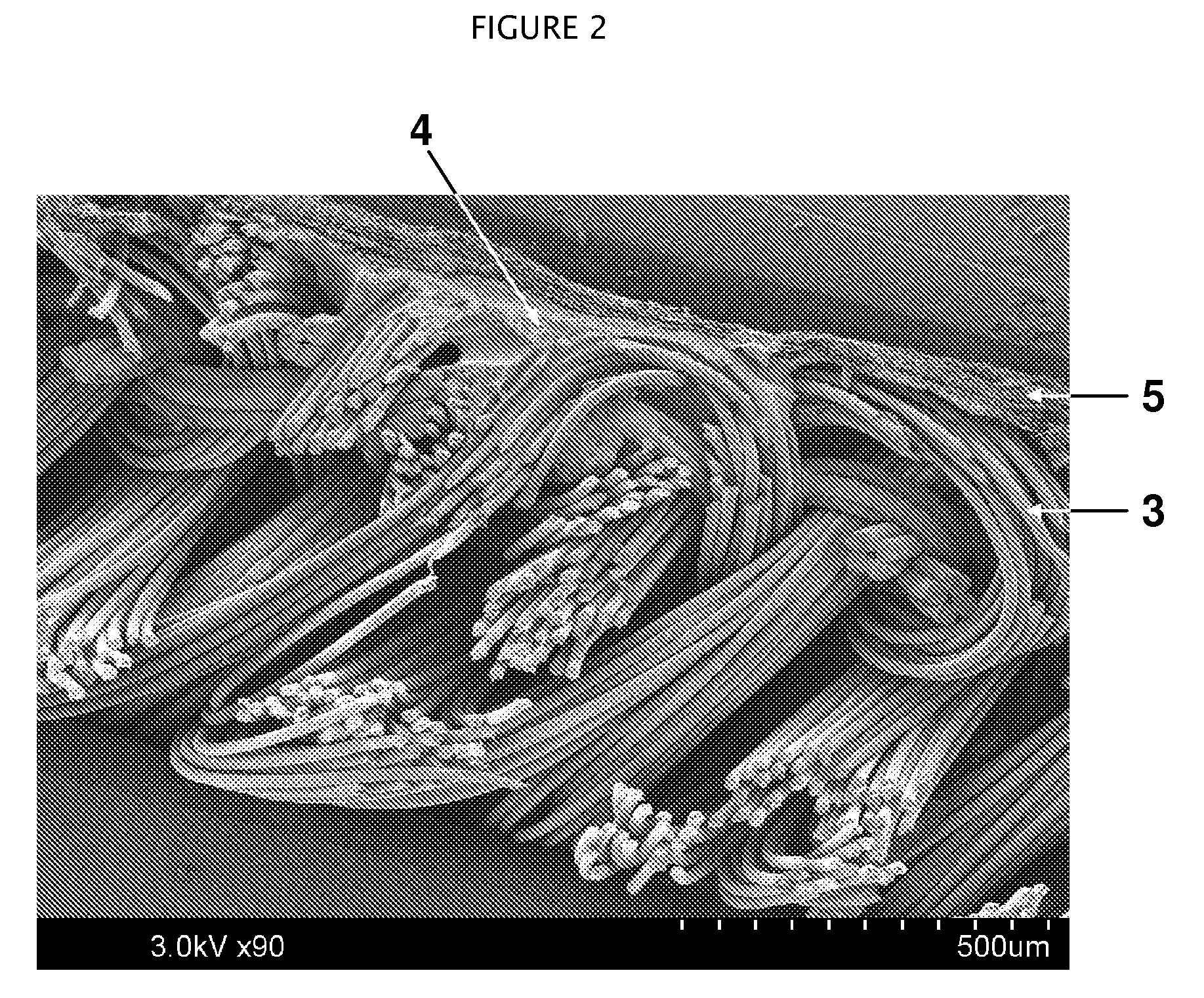Stretchable nonwoven fabric, method of manufacturing, and products made thereof
a non-woven fabric, stretchable technology, applied in the direction of filament/thread forming, monocomponent polyurethane artificial filament, packaging, etc., can solve the problems of microporous layer being susceptible to air permeability, reducing durability, and loss of waterproofness
- Summary
- Abstract
- Description
- Claims
- Application Information
AI Technical Summary
Benefits of technology
Problems solved by technology
Method used
Image
Examples
example 1
[0040]The object of the experiment outlined below was to develop a stretchable, nonwoven nanofiber fabric that can be laminated onto a Lycra® containing stretchable fabric to form a laminate which can then be used in a sports garment article.
[0041]A polyurethane (ESTANE X-1169 Thermoplastic PU) was mixed in a 70:30 mixture of N,N,-dimethylformamide and tetrahydrofuran, at a loading concentration of 16% on weight basis. The solution was adjusted with additives to have a conductivity of 107.4 mS / cm, viscosity of 599.3 cP, and total dissolved solids (TDS) of 37 mg / L.
[0042]Using a solution feed rate of 0.45 ml / min to the electrospinning equipment, the stretchable, nonwoven electrospun nanofiber fabric is made on a release liner substrate. The spinning occurs under the operating potential difference of 40 kV between the spinnerets and the collector plate separated by 2 inches. The fabric obtained has an average basis weight of 4.65 gsm.
[0043]A 85:15 Nylon-Lycra® fabric is coated with an ...
example 2
[0045]The object of the experiment outlined below was to develop a stretchable composite fabric obtained by electrospinning a stretchable, nonwoven nanofiber fabric onto a Lycra® containing stretchable fabric that has stretchability values within 10% of the nanofiber layer.
[0046]A polyurethane (ESTANE X-1169 Thermoplastic PU) was mixed in a 70:30 mixture of N,N,-dimethylformamide and tetrahydrofuran, at a loading concentration of 16% on weight basis. The solution was adjusted with additives to have a conductivity of 107.4 mS / cm, viscosity of 599.3 cP, and total dissolved solids (TDS) of 37 mg / L.
[0047]Using a solution feed rate of 0.45 ml / min to the electrospinning equipment, the stretchable, nonwoven electrospun nanofiber fabric was coated onto a stretchable Lycra® fabric. The spinning occurs under the operating potential difference of 40 kV between the spinnerets and the collector plate separated by 2 inches. The nanofiber layer has an average basis weight of 4.72 gsm.
[0048]The lam...
PUM
| Property | Measurement | Unit |
|---|---|---|
| diameters | aaaaa | aaaaa |
| diameters | aaaaa | aaaaa |
| diameters | aaaaa | aaaaa |
Abstract
Description
Claims
Application Information
 Login to View More
Login to View More - R&D
- Intellectual Property
- Life Sciences
- Materials
- Tech Scout
- Unparalleled Data Quality
- Higher Quality Content
- 60% Fewer Hallucinations
Browse by: Latest US Patents, China's latest patents, Technical Efficacy Thesaurus, Application Domain, Technology Topic, Popular Technical Reports.
© 2025 PatSnap. All rights reserved.Legal|Privacy policy|Modern Slavery Act Transparency Statement|Sitemap|About US| Contact US: help@patsnap.com



